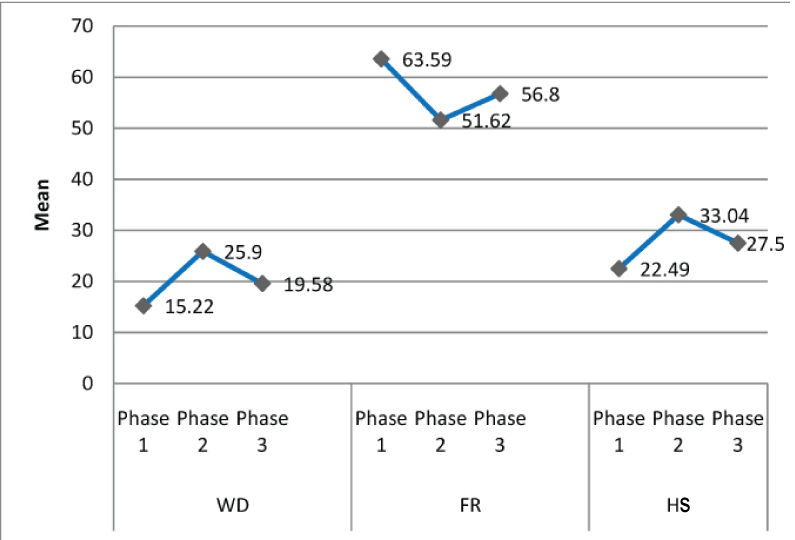Statistical Comments on "Assessment of Musculoskeletal Strength and Levels of Fatigue During Different Phases of Menstrual Cycle in Young Adults"
Mehrdad Farrokhi1, Ali Amani-Beni2
1 Medical Student, School of Medicine, Isfahan University of Medical Sciences, Isfahan, Iran.
2 Medical Student, School of Medicine, Isfahan University of Medical Sciences, Isfahan, Iran.
NAME, ADDRESS, E-MAIL ID OF THE CORRESPONDING AUTHOR: Dr. Mehrdad Farrokhi, Mother Boulevard, Golpayegan, Isfahan, Iran.
E-mail: mehrdadfarokhi72@yahoo.com
Dear Editor,
We read with great interest a recent article by Pallavi L et al., [1] entitled “Assessment of musculoskeletal strength and levels of fatigue during different phases of menstrual cycle in young adults”. In this prospective study, they evaluated musculoskeletal strength and levels of fatigue of 100 healthy adult female volunteers in three phases which were Phase 1-Mentsrual phase, Phase 2-Follicular phase and Phase 3-Luteal phase. The major concern is about the statistical analysis employed in this study. The authors used one-way Analysis of Variance (ANOVA) and post-hoc test (Tukey) to test the significance of differences of numerical variables between three phases. The one-way ANOVA is used to determine if there are any statistically significant differences between the means of three or more independent (unrelated) groups, but the groups of this study are not independent. The authors assessed the means of musculoskeletal strength and levels of fatigue in 100 healthy volunteers in different times. Therefore, the groups of this study (i.e. three phases) are dependent or related to each other because there are three times of assessment of variables on one sample. In this study, they must use repeated measures ANOVA for comparison of musculoskeletal strength and levels of fatigue between three phases. In addition, they must use paired t-test for comparison of numerical variables between two phases.
In conclusion, we believe that most of the statistical tests used in this study and also results and discussion based on them are useless and even misleading and the author’s valuable study could better be used as citable evidence if analyzed with appropriate statistical tests.
Author’s Reply
With the above reference, in response to the query raised pertaining to the statistical tests done, we took a second opinion from the same statistician and accordingly the tests suggested were applied. However, the results did not change within the groups comparison.
One-way repeated measures ANOVA with a Greenhouse-Geisser correction determined that mean Work Done (WD), Fatigue Rate (FR) and Handgrip Strength (HS) differed significantly between time points. During the second phase, there was an increase in mean in WD and HS whereas reduction in FR. Post-hoc tests using the Bonferroni correction revealed that there was statistically significant difference between all the time points (p<0.001) in all parameters. [Table/Fig-1] displays the mean among the different phases in the three parameters.
Showing the mean among the different phases in the three parameters.
| Parameters | Phase | Mean±SD | p-value |
|---|
| WD | 1st | 15.22 ± 1.84 | <0.001 |
| 2nd | 25.90 ± 2.77 |
| 3rd | 19.58 ± 2.15 |
| FR | 1st | 63.59 ± 4.22 | <0.001 |
| 2nd | 51.62 ± 4.07 |
| 3rd | 56.80 ± 3.98 |
| HS | 1st | 22.49 ± 3.36 | <0.001 |
| 2nd | 33.04 ± 3.73 |
| 3rd | 27.25 ± 3.42 |
 |
[1]. Pallavi L, D Souza UJ, Shivaprakash G, Assessment of musculoskeletal strength and levels of fatigue during different phases of menstrual cycle in young adults Journal of Clinical and Diagnostic Research: JCDR 2017 11(2):CC11 [Google Scholar]